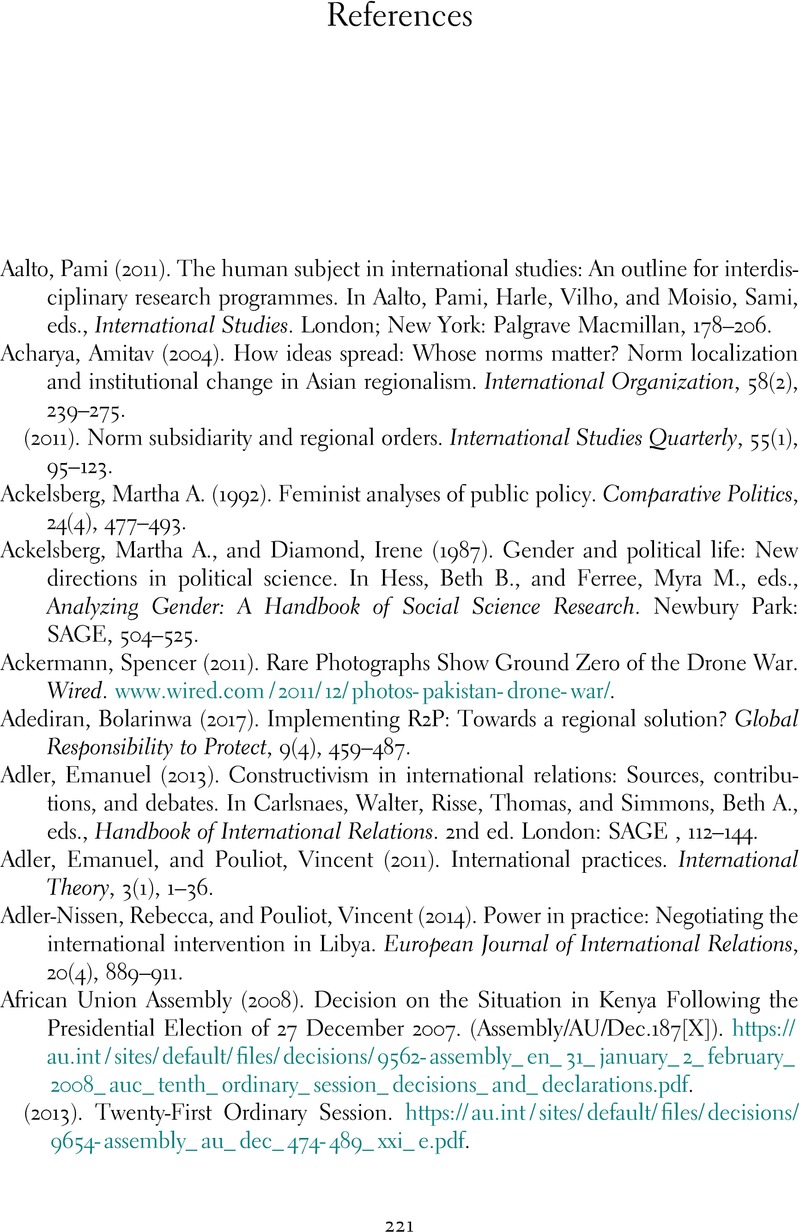 The Humanisation of Global Politics
The Humanisation of Global Politics Book contents
- The Humanisation of Global Politics
- Studies on International Courts and Tribunals
- The Humanisation of Global Politics
- Copyright page
- Dedication
- Contents
- Figures
- Tables
- Preface
- Acknowledgements
- Materials Used
- Abbreviations
- 1 The Humanisation of Global Politics
- 2 Humanisation in IR Theory and International Law
- 3 The Social Construction of the Individual Human Being
- 4 Guilty and Innocent
- 5 Heuristics and Positions
- 6 Protecting the Individual Human Being from Mass Atrocities
- 7 Killing the Individual Human Being via Drones
- 8 The Individual Human Being as a Theoretical Category
- Appendices
- References
- Index
- References
References
Published online by Cambridge University Press: 25 August 2022
- The Humanisation of Global Politics
- Studies on International Courts and Tribunals
- The Humanisation of Global Politics
- Copyright page
- Dedication
- Contents
- Figures
- Tables
- Preface
- Acknowledgements
- Materials Used
- Abbreviations
- 1 The Humanisation of Global Politics
- 2 Humanisation in IR Theory and International Law
- 3 The Social Construction of the Individual Human Being
- 4 Guilty and Innocent
- 5 Heuristics and Positions
- 6 Protecting the Individual Human Being from Mass Atrocities
- 7 Killing the Individual Human Being via Drones
- 8 The Individual Human Being as a Theoretical Category
- Appendices
- References
- Index
- References
Summary

- Type
- Chapter
- Information
- The Humanisation of Global PoliticsInternational Criminal Law, the Responsibility to Protect, and Drones, pp. 221 - 274Publisher: Cambridge University PressPrint publication year: 2022
